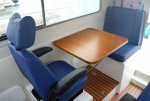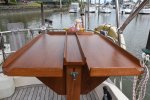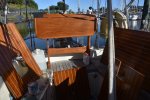eddystone
Well-known member
I’m looking to put some coats of varnish on an internal bulkhead or two and also teak/holly soleboards which have been hiding under carpet. I intend to rub down, in the case of the sole boards far enough to remove ingrained dirt but not back to bare wood. The stuff Sadler used is no longer available so I was wondering whether I should be using oil or water based varnishes to get a satin finish. Also in terms of application can I use white spirit to thin first coat (s) or something else. My varnishing efforts aren’t generally very impressive so I was looking at spraying but they seem disproportionately expensive for the size of the job. Another also (!) is it correct one should use gloss varnish and then satin for the final coat?



